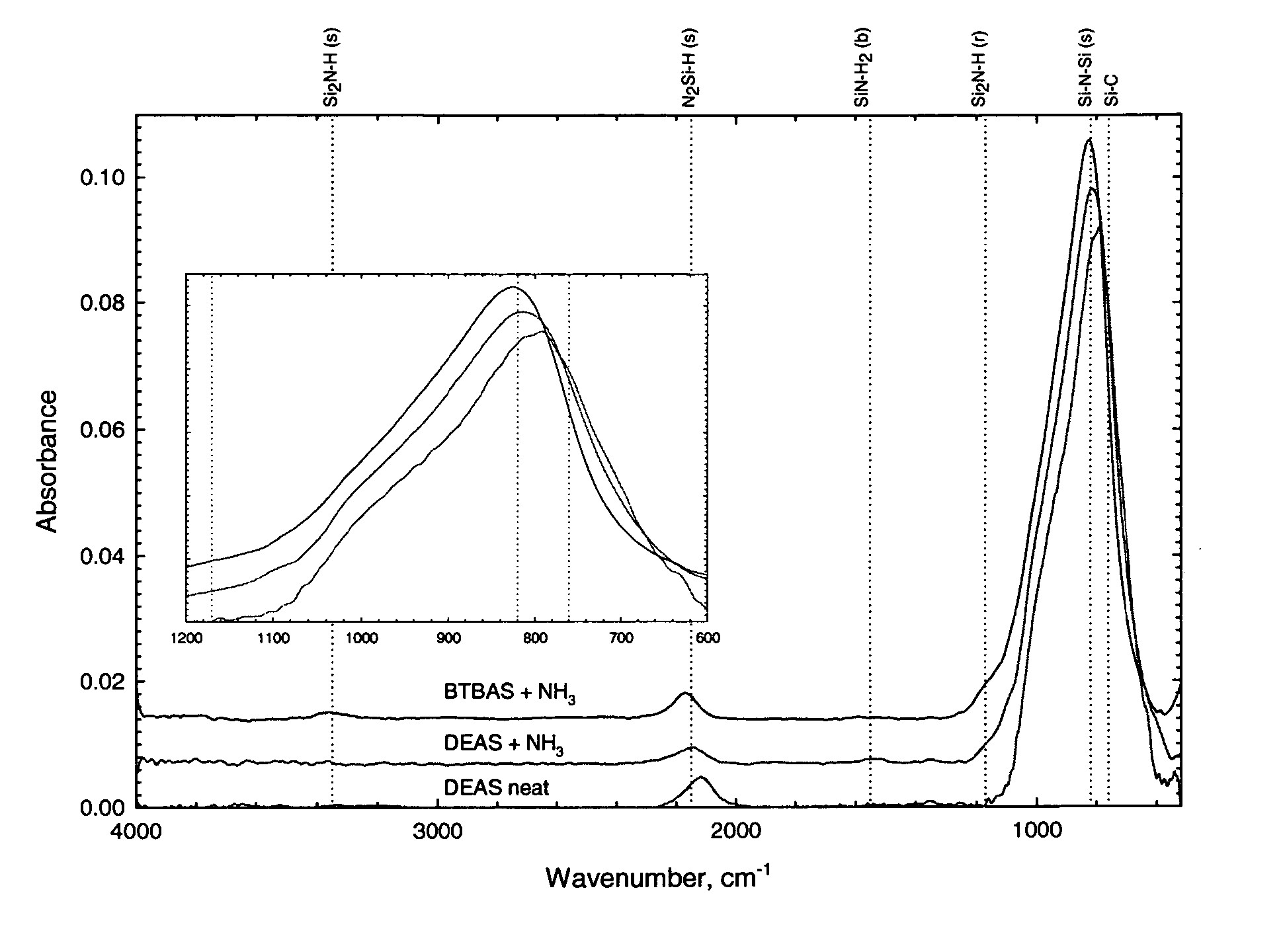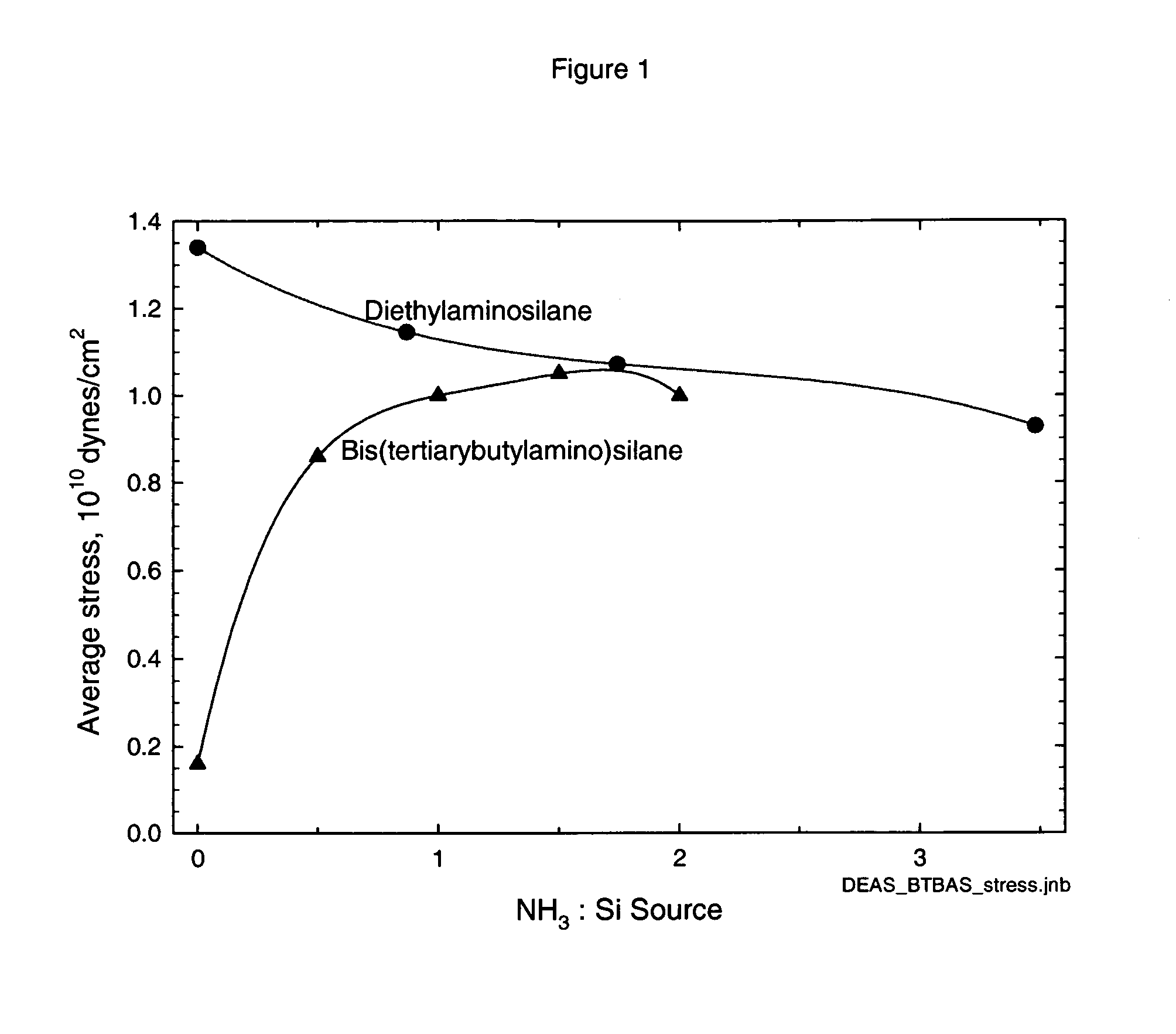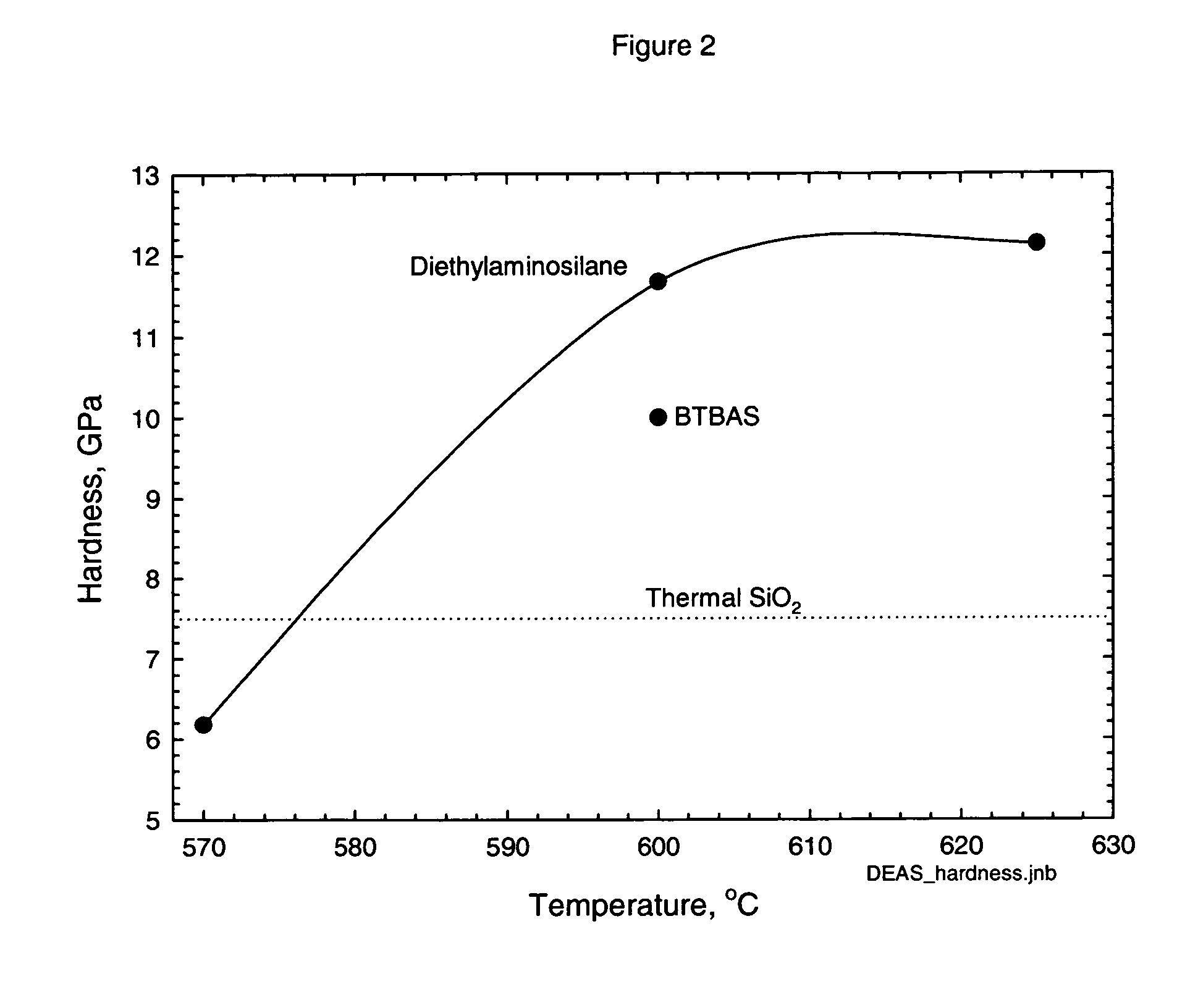Precursors for CVD silicon carbo-nitride films
- Summary
- Abstract
- Description
- Claims
- Application Information
AI Technical Summary
Benefits of technology
Problems solved by technology
Method used
Image
Examples
example 1
Synthesis of Diethylaminosilane
[0044] 50 grams (0.33 mol) of trifluoromethanesulfonic acid and 100 ml of toluene were added to a 250 ml flask. Under the protection of nitrogen, the flask was cooled to −40° C. 40.6 grams (0.33 mol) of tolylsilane was added slowly. Then the flask was cooled to −60° C. 33.5 grams of triethylamine was added slowly, followed by addition of 24 grams of diethylamine. After addition, the temperature of the flask was allowed to warm to room temperature gradually. Two layers of liquid were formed. The upper layer was separated using a separation funnel. 25 grams of diethyaminolsilane was obtained by vacuum distillation. The boiling point of the diethyaminolsilane was 40-42° C. at 210 mmHg.
example 2
Synthesis of Di-Iso-Propylaminosilane
[0045] 50 grams (0.33 mol) of trifluoromethanesulfonic acid and 80 ml of pentane were added to a 250 ml flask. Under the protection of nitrogen, the flask was cooled to −40° C. 35.6 grams (0.33 mol) of phenylsilane was added slowly. Then the flask was cooled to −60° C. 33.3 grams (0.33 mol) of triethylamine was added slowly, followed by addition of a solution 33.3 grams (0.33 mol) of di-iso-propylamine in 15 ml of pentane. After addition, the temperature of the flask was allowed to warm to room temperature gradually. Two layers of liquid were formed. The upper layer was separated using a separation funnel. The solvent and by product benzene were removed by distillation. 30 grams of di-iso-propylaminosilane was obtained by vacuum distillation. The boiling point of the di-iso-propylaminosilane was 55° C. at 106 mmHg.
example 3
Synthesis Of Cyclohexyldisilylamine and 2,4-Dicyclohexyl-2,4-Diaza-1,3,5-Trisilapentane
[0046] 62.5 grams of trifluoromethanesulfonic acid and 100 ml of pentane were added to a 500 ml flask. Under the protection of nitrogen, the flask was cooled to −40° C. 45 grams of phenylsilane was added slowly. Then the flask was cooled to −60° C. 42 grams of triethylamine was added slowly, followed by addition of a solution 20.6 grams of cyclohexylamine in 15 ml of pentane. After addition, the temperature of the flask was allowed to warm to room temperature gradually. Two layers of liquid were formed. The upper layer was separated using a separation funnel. The solvent and by product benzene were removed by distillation. 15 grams of cyclohexyldisilylamine was obtained by vacuum distillation. The boiling point of the cyclohexyldisilylamine was 54-55° C. at 17 mmHg. The remaining high boiling point portion contains 96.6% 2,4-dicyclohexyl-2,4-diaza-1,3,5-trisilapentane.
PUM
| Property | Measurement | Unit |
|---|---|---|
| Temperature | aaaaa | aaaaa |
| Pressure | aaaaa | aaaaa |
| Pressure | aaaaa | aaaaa |
Abstract
Description
Claims
Application Information
 Login to View More
Login to View More - R&D
- Intellectual Property
- Life Sciences
- Materials
- Tech Scout
- Unparalleled Data Quality
- Higher Quality Content
- 60% Fewer Hallucinations
Browse by: Latest US Patents, China's latest patents, Technical Efficacy Thesaurus, Application Domain, Technology Topic, Popular Technical Reports.
© 2025 PatSnap. All rights reserved.Legal|Privacy policy|Modern Slavery Act Transparency Statement|Sitemap|About US| Contact US: help@patsnap.com



